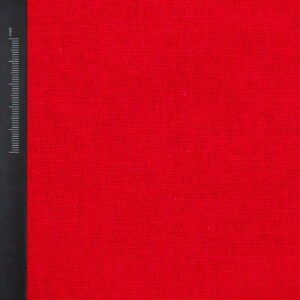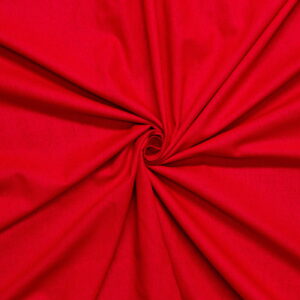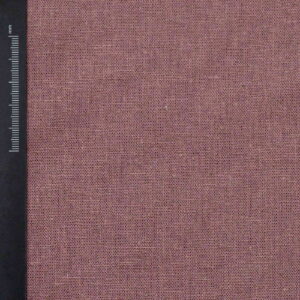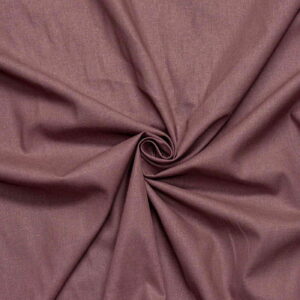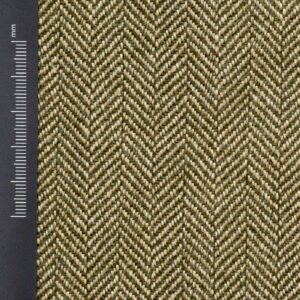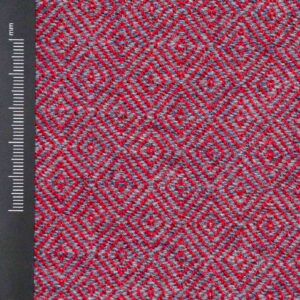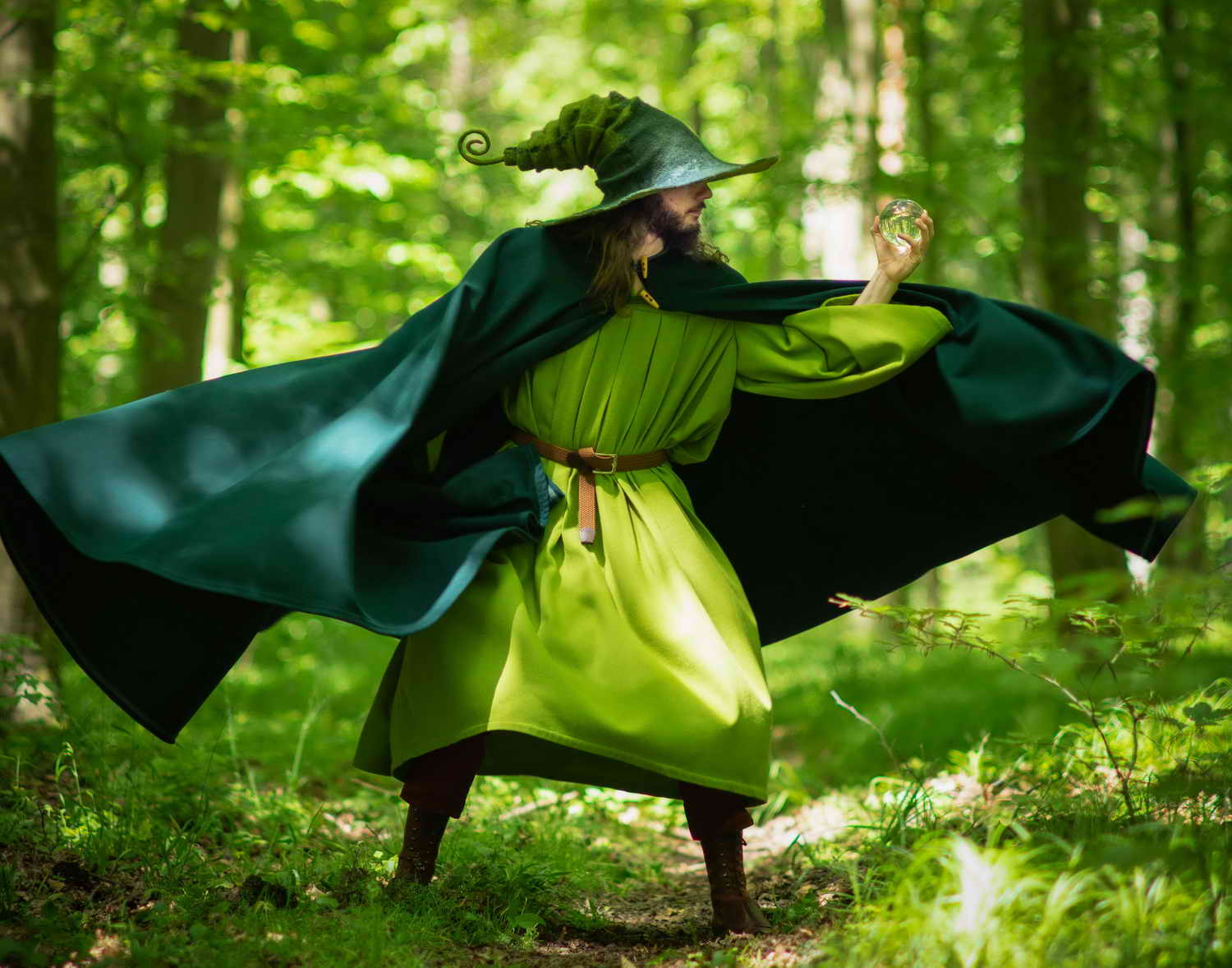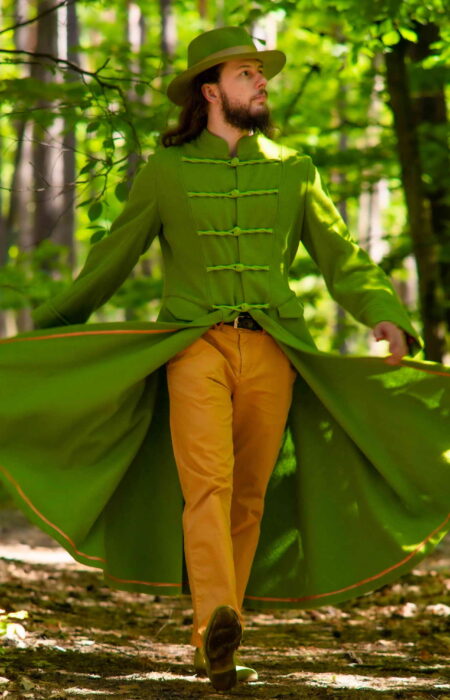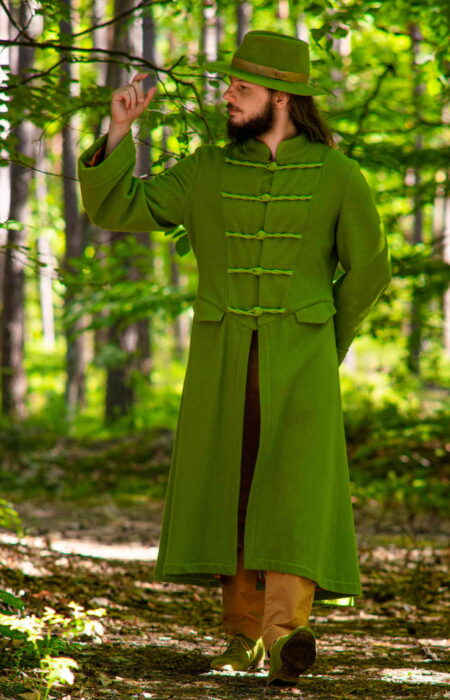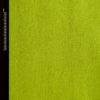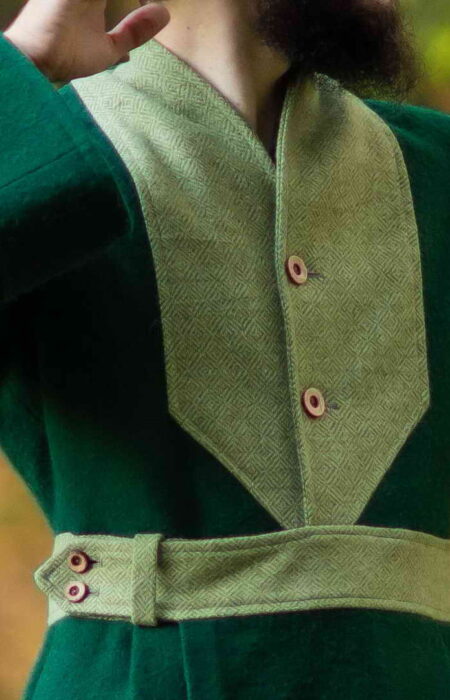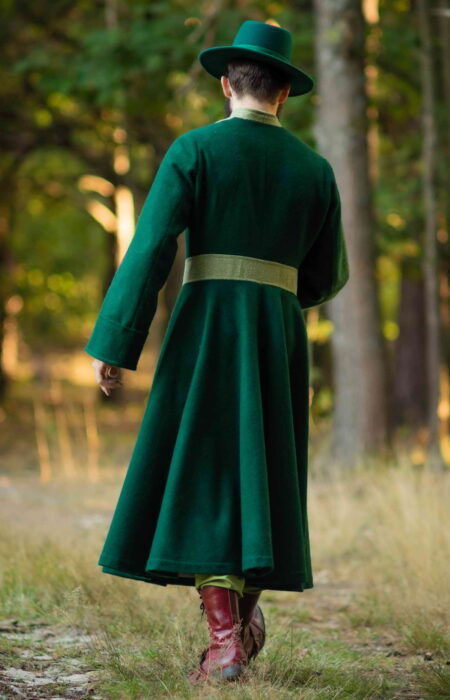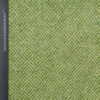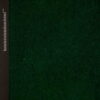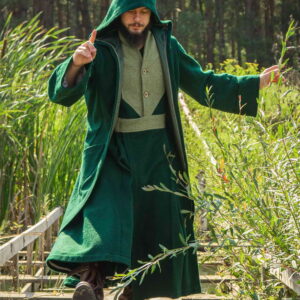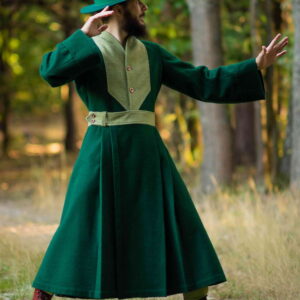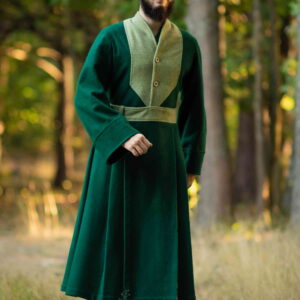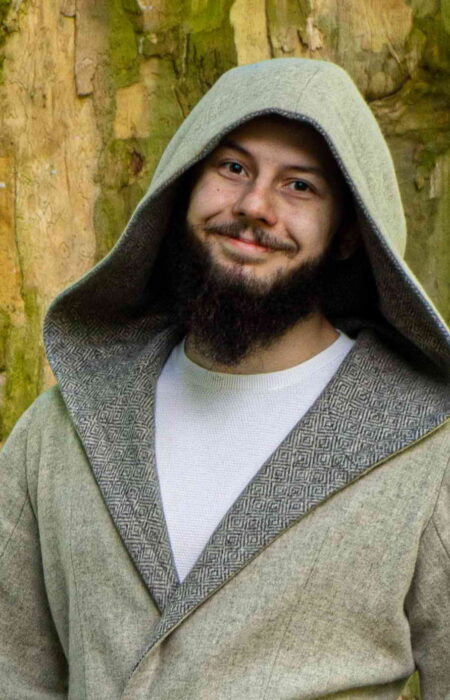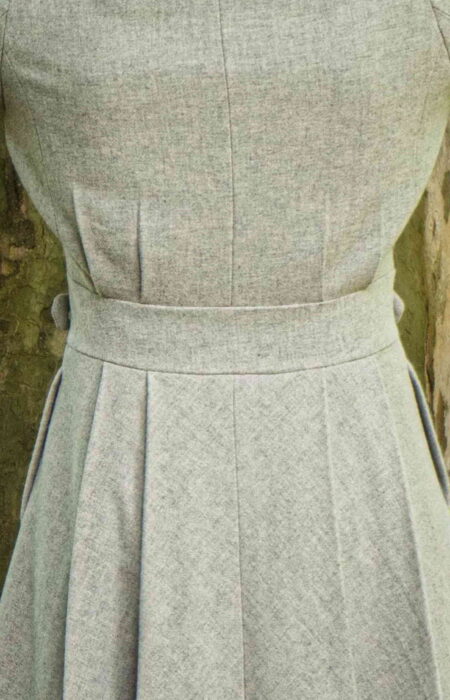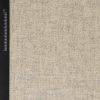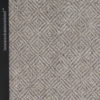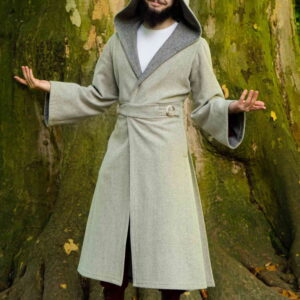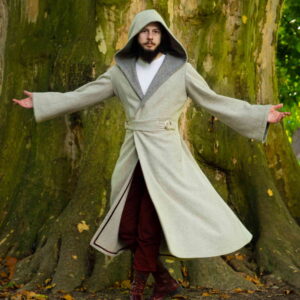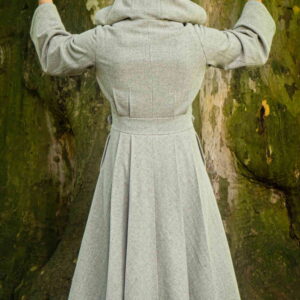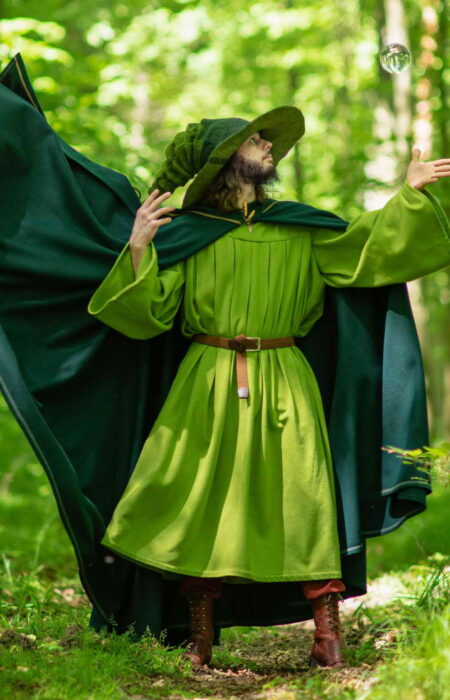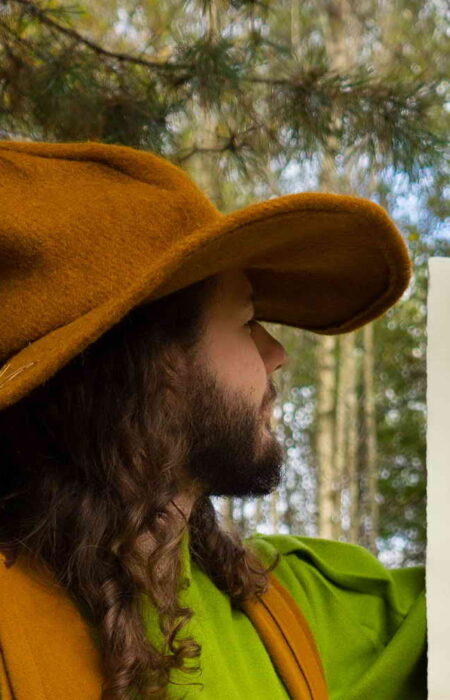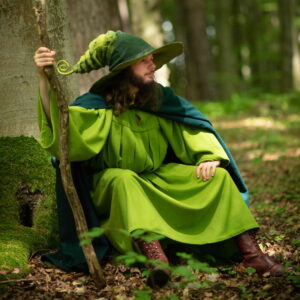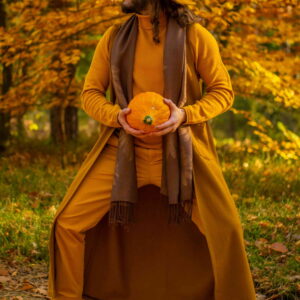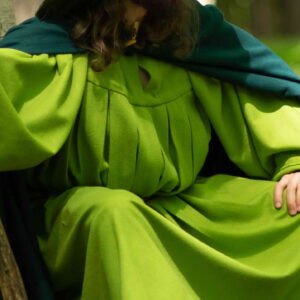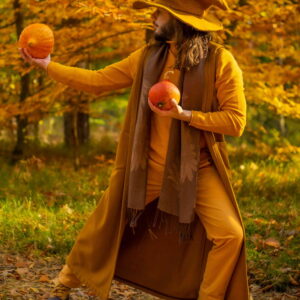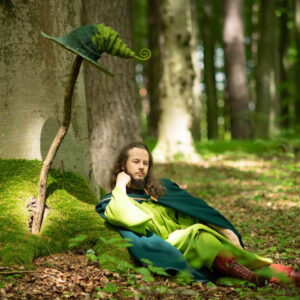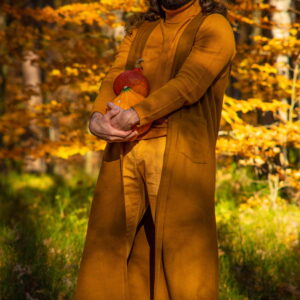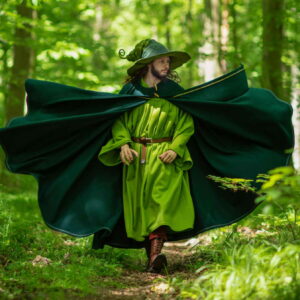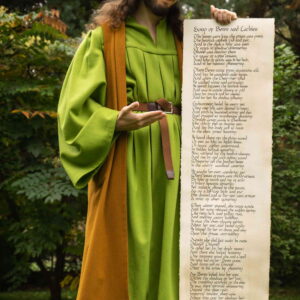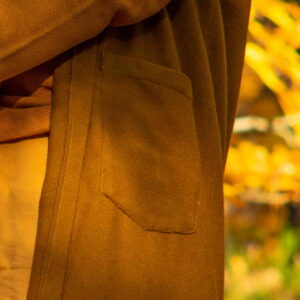My name is Basil and I work near the city Łańcut, in southeastern Poland. My tailoring adventures began with late 19th and early 20th century fashion – frock coats, tailcoats, suits, overcoats. Quite quickly however my interests moved towards things more creative, fantasy-inspired. And while I still work on a jacket or a pair of trousers now and then, I take more joy in coming up with new things.
Robe or coat?
The bottom of the coat is cut out of a slightly lengthened semicircle. Although it might seem a bit extensive, with an easy drape of the lightweight fabric it certainly adds a bit of dramatic flair. At the top can be found another reference to 19th century (this time civil) fashion – the inseam flap pockets. With the flap itself shaped into a point. While the upper and sleeves are fully lined, the bottoms and pocket bags are trimmed with bias tape that matches the lining.
Fronts frog fastening was inspired by 19th century military uniforms. The angled seam running from shoulder to the waist serves not only to hide the ropes’ ends and make shoulders appear broader but also replaces shoulder and waist darts, allowing for a close-fitting chest and tapered waist. Sleeves with constant width at whole length look as if the opening was indeed wider. That extra width makes the garment breezier on warmer days and lets one hide their hands within the sleeves on colder ones.
Model: Wizard
Instead of classic pockets, the outer pleats hide slits that let the user reach into their trousers pockets. Above the belt is the bib – both made in fabric that creates a pleasant contrast with the rest of the robe. The front serves to provide waist compression as well – its seams replace the darts that would otherwise be placed there. The hourglass shape is further increased by the ample skirt – which in this case is again cut out of a semicircle.
This project was a further development of previous idea, with the goal however to make it even more ‘magical’. We end up with what essentialy looks like a robe, but is as easy to put on as a coat.
A knowing eye will also notice similarities to classic menswear. Just like old trousers would usually have two pleats each side, so does the bottom here. The ‘belt’ is also inspired by sartorial waistbands, with two buttons and a belt loop. Such closure is not a work of accident – one of the front pleats is in fact no pleat at all, but an offset-slit, that again serves to make the whole thing easier to put on and grants some additional freedom of movement.
Basil used:
Model: Warlock
This little feature is a nod to ‘sporting’ fashion of 1930s. Similar to the hood and lapels, insides of the sleeves are faced with diamond twill. Bottom is cut way more narrow than previous ones as instead of a half, if laid flat it would shape a quarter of a circle. Within that quarter are the pleats. And thanks to that, while their width at the top is relatively modest, they do widen significantly at the bottom. Their position corresponds with the ones on the upper back part. Front bits are cut straight so that they would drap flat. Sides are furnished with two vertical welt pockets.
While the silhouette might seem similiar, this coat is in fact much lighter. It is indeed in its form much closer to a classic overcoat. First distinctive bit of this one are lapels and a spacious hood, faced with lightly contrasting diamond twill, which additionally give them more structure.
Basil used:
Fun with form and color
In both cases, it is worth paying attention to the headgear. Both hats are made of wool purchased from WoolSome. As you can see, the appropriate draping of the material, stitching and stiffening allow you to make interesting forms that look great. Probably, these are not the only hats that will come out of my hand, but I am sure that I will be able to make them from any material.
The last two projects are a loose play with form and color. Inspired by the fantasy world, they are used to create a magician who feels special. There is no specific character behind them. Both outfits are a form of practicing the construction of clothing, checking various options for combining colors and textures of the material.



